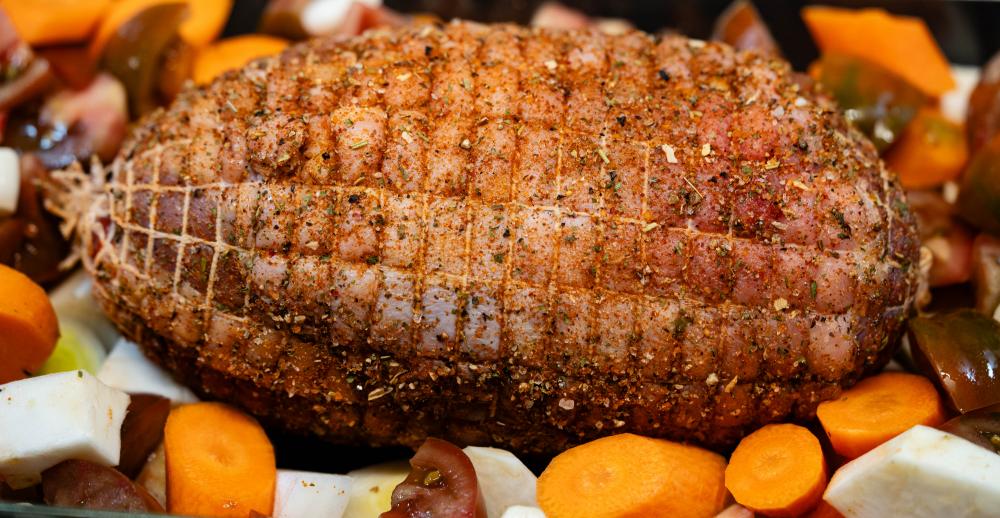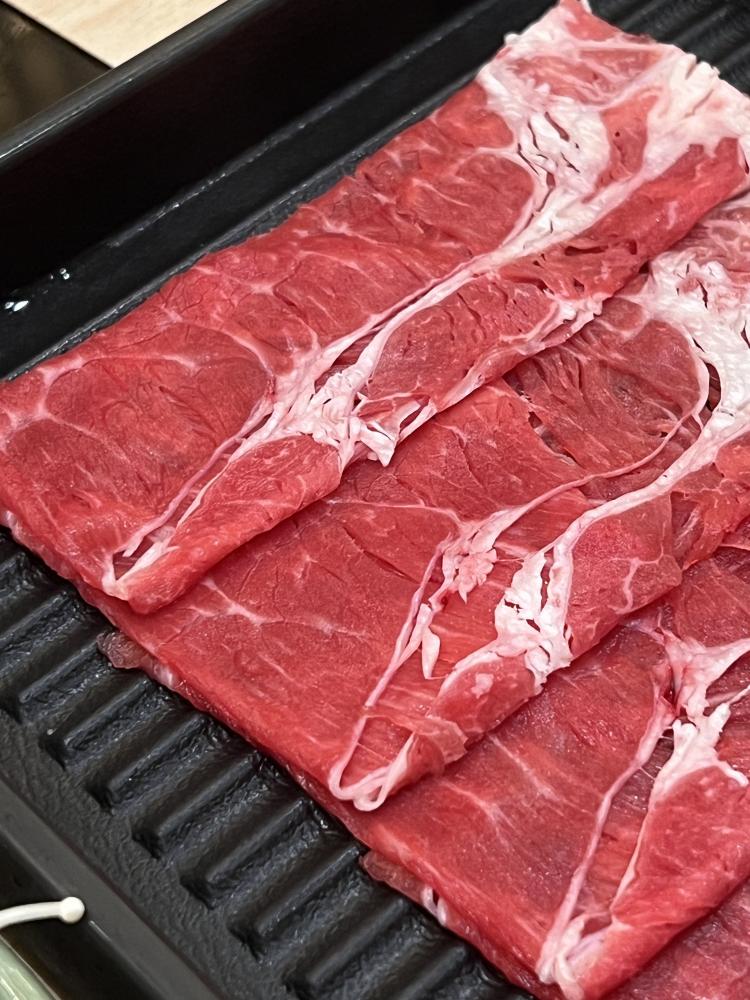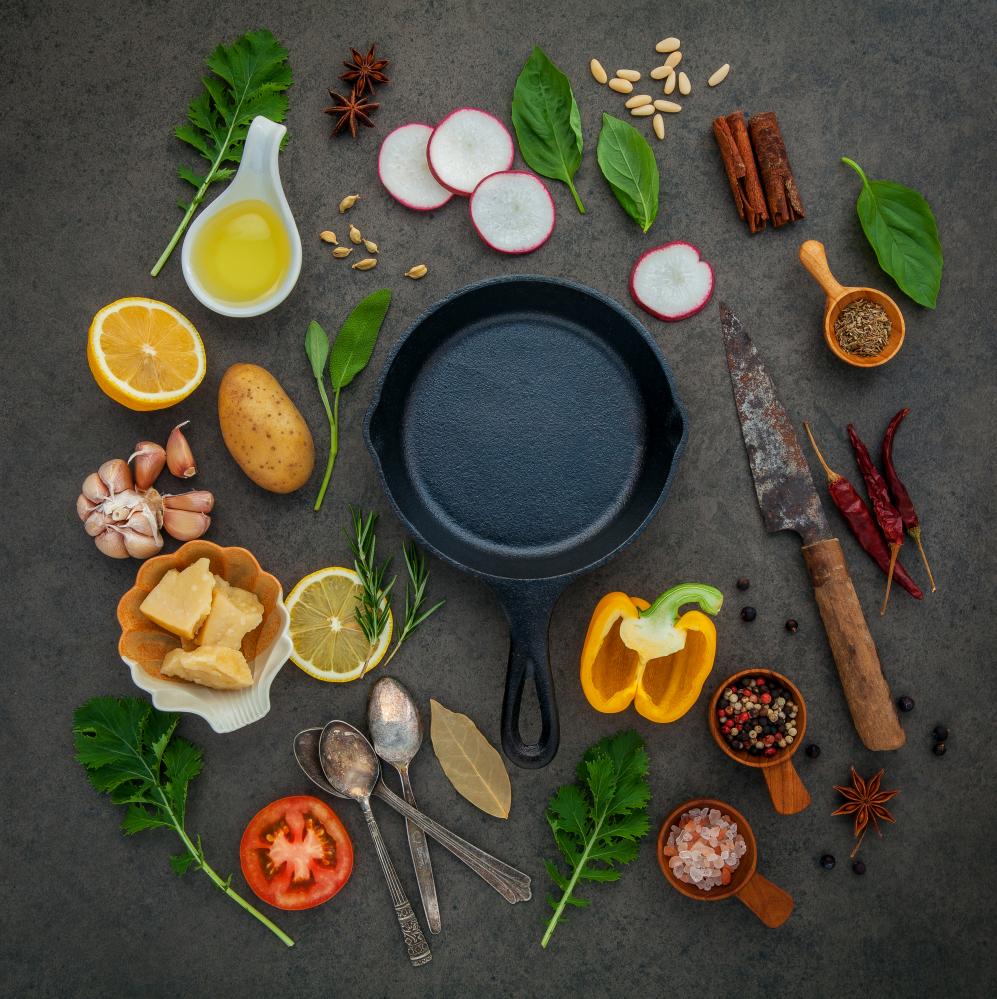
Essentials of Brisket Cooking
Embarking on the journey of how to cook brisket in oven begins with understanding the cut itself. Brisket, hailing from the lower chest of the cow, requires patience and a low-and-slow cooking method to transform its tough connective tissues into succulent, mouth-watering meat. At Brisket Pro, we’ve honed our skills to bring you tried-and-true methods that ensure a perfect oven-baked brisket every time.
Choosing the right cut is paramount. Look for a brisket with good marbling and a thick fat cap; these features are vital in keeping the brisket moist during the long cooking process. Remember, the fat not only adds flavor but also prevents the meat from drying out.
Preparation is Key
Trimming and Seasoning:
How to cook brisket in oven successfully also hinges on proper preparation. Trimming the fat cap to about ¼ inch thick will ensure that enough fat renders to keep the brisket juicy, without leaving an overwhelming amount of unrendered fat in the final product. Seasoning the brisket is your next step; a simple rub of salt, pepper, garlic powder, and onion powder can work wonders. However, feel free to experiment with your blend to match your taste.
Let the Brisket Acclimate:
Bringing the brisket to room temperature before cooking promotes even cooking. This simple step, often overlooked, can make a significant difference in the cooking process. Allow your seasoned brisket to sit out for an hour before it hits the oven.
The Cooking Process
Initial High Heat:
When it’s time to cook, start by preheating your oven. We recommend an initial blast of heat at 325°F for about an hour to kickstart the cooking process, then lowering the temperature to 275°F ensures that your brisket cooks through without drying out. This method helps in rendering the fat and converting the connective tissues into gelatin, which is the key to a tender brisket.
Low and Slow:
The mantra ‘low and slow’ rings especially true for how to cook brisket in oven. A general guideline is to cook your brisket for roughly an hour per pound at 275°F. However, this can vary based on the specific characteristics of the meat. Maintaining a lower temperature allows for a gentle cook, letting the brisket become tender over time.
Post-Cooking Care
Resting your brisket is as critical as the cook itself. After hours in the oven, allow your masterpiece to rest covered in foil for at least 30 minutes before slicing. This rest period lets the juices redistribute, ensuring every slice is as flavorful and tender as possible.
Slicing against the grain is the final step in your brisket journey. This technique ensures the most tender eating experience, as it shortens the muscle fibers, making them easier to chew. Serve with your favorite sides, and don’t forget to drizzle some of the cooking juices over the slices to enhance the flavor and moisture.
Tips for Perfection
- Always choose a brisket with good marbling and a thick fat layer. This natural insulation helps keep the meat moist throughout the cooking process.
- Don’t rush the cooking process. Good things come to those who wait, and brisket is no exception. Patience yields the most tender and flavorful results.
- Invest in a good quality meat thermometer to ensure your brisket reaches the correct internal temperature without overcooking.
- Remember, every brisket is unique. Adjust cooking times based on the specific size and shape of your cut.
At Brisket Pro, our passion for sharing knowledge on how to cook brisket in oven has guided countless individuals towards achieving brisket perfection. Harness these insights, and embrace the journey of creating a delectable brisket that will delight your taste buds and impress your guests.

Understanding Brisket’s Tenderness and Cooking Time
When it comes to smoking or grilling brisket, one of the most prevalent questions is, ” Does brisket get more tender the longer you cook it?” The answer, while seemingly straightforward, involves a deeper understanding of brisket’s unique composition and how it reacts under prolonged heat. At Brisket Pro, we’ve spent countless hours experimenting with and perfecting our brisket cooking techniques to provide you with insights that go beyond the conventional wisdom.
The key to brisket’s tenderness lies in its high collagen content, which transforms into gelatin through slow cooking at low temperatures. This process not only makes the meat buttery soft but also enriches it with flavors that are the hallmark of an expertly cooked brisket. Therefore, to some extent, the principle of “the longer, the tenderer” holds true, but there’s more to this equation.
However, it’s crucial to understand that this doesn’t mean you can cook brisket indefinitely and expect it to become tenderer indefinitely. There’s a fine line between breaking down the collagen and drying out the meat, turning it tough. This balance is what defines the art of brisket cooking.
Exploring Variations in Cooking Methods
Traditional Low and Slow: The most time-honored method involves cooking brisket at low temperatures (about 225°F) for an extended period. This method is predicated on the idea that gentle, prolonged heat allows the meat’s tough fibers to gradually break down without losing moisture, hence answering yes to “Does brisket get more tender the longer you cook it?” in this context.
Hot and Fast Approach: Contrary to traditional methods, the hot and fast approach involves cooking brisket at higher temperatures (around 325°F) for a shorter period. This method can produce a tender brisket but requires careful attention to prevent the exterior from drying out or burning before the interior reaches the desired tenderness.
- Collagen breakdown: Both cooking methods aim to transform collagen into gelatin, albeit in different time frames.
- Moisture retention: Proper wrapping (e.g., butcher paper, foil) during cooking can help preserve moisture in both methods.
- Temperature monitoring: Regardless of the method, closely monitoring the brisket’s internal temperature is crucial to avoid overcooking.
Adopting either method depends on personal preferences, available time, and the specific brisket cut. At Brisket Pro, we’ve had succulent results with both, though each presents its unique challenges and rewards.
Optimizing Brisket Tenderness: Expert Insights
As a seasoned BBQ enthusiast, I’ve learned that achieving the perfect balance of tenderness and flavor in a brisket requires a holistic approach that goes beyond simply cooking it longer. Here are our top tips for tender brisket:
Understanding the Stall: The “stall,” a period during cooking when the brisket’s internal temperature plateaus, often confounds many. Wrapping the brisket at this stage can help push past the stall by retaining moisture and heat, crucial for breaking down collagen without drying out the meat.
Resting is Key: Perhaps one of the most underappreciated steps in the process is the rest period after cooking. Allowing the brisket to rest for several hours helps redistribute the juices throughout the meat, enhancing both tenderness and flavor.
Patience Pays Off: Whether choosing low and slow or hot and fast, patience is a virtue in brisket cooking. Rushing the process or cutting corners often leads to subpar results. Remember, the question of “Does brisket get more tender the longer you cook it?” can’t be answered without considering the importance of a controlled and patient approach to cooking.
In conclusion, while brisket does become more tender the longer you cook it, achieving the pinnacle of tenderness requires a nuanced understanding of the cooking process, proper techniques, and the patience to let the brisket’s natural flavors and textures shine. At Brisket Pro, our passion is to guide you through mastering these elements for your next BBQ masterpiece.
Perfecting Brisket Tenderness
When it comes to mastering how to make brisket tender in smoker, the journey begins long before the brisket hits the heat. Here at Brisket Pro, we understand that achieving that fall-apart tenderness and rich flavor is a blend of art and science. Selecting the quality of your brisket plays a pivotal role. Aim for a cut with good marbling; that’s the fat running through the meat, not just around it. Marbling is crucial as it melts during the slow smoking process, naturally basting the brisket from the inside, ensuring it stays moist and tender.
Preparation is king. Before your brisket ever sees the smoker, giving it a well-considered rub of spices can make all the difference. A balance of salt, pepper, garlic powder, and paprika not only seasons the meat but also helps to form a gorgeous, savory bark that locks in moisture. Don’t be shy with your rub. A generous coating means a more flavorful crust.
Smoking Techniques
Temperature Control
How to make brisket tender in smoker greatly depends on mastering the temperature. Maintaining a consistent low heat, around 225-250°F, allows the collagen in the brisket to break down into gelatin at the right pace, tenderizing the meat without drying it out. It’s a slow process, often requiring patience over hours, but the outcome is well worth the wait.
Moisture Matters
Keeping the brisket moist while it smokes is another key factor. Utilizing a water pan within the smoker adds humidity to the cooking environment, preventing the brisket from drying out. Some pitmasters go a step further by mopping or spraying the brisket periodically with a mixture of apple cider vinegar and water, enriching the brisket’s flavor and enhancing its tenderness.
Resting Time
After countless hours in the smoker, the temptation to slice into your brisket immediately can be overwhelming, but patience in allowing it to rest is a virtue. Resting the brisket for at least an hour lets the juices redistribute throughout the meat, ensuring each bite is as succulent as the last. Wrapping it in butcher paper or foil during this time can keep it warm and moist.
Going Beyond Basics
When discussing how to make brisket tender in smoker, smoke itself is an ingredient. The type of wood you choose for smoking significantly impacts the flavor profile of your brisket. Woods like oak, hickory, or mesquite provide robust flavors, while fruitwoods like apple or cherry offer a sweeter touch. Experimenting with different woods can lead you to find the perfect match for your taste preferences.
In my years of experience and countless briskets smoked, I’ve found that the journey of learning how to make brisket tender in smoker doesn’t end. Each brisket teaches you something new, and each adjustment you make perfects your craft a little more. Sharing these moments with friends and family, seeing their enjoyment of the meal, makes all the nuances of brisket smoking profoundly worth it.
- Select a brisket with good marbling.
- Apply a generous rub of spices.
- Maintain a consistent low temperature.
- Use a water pan to add moisture.
- Let the brisket rest before slicing.
- Experiment with different smoking woods.

How long should a brisket take in the oven?
Well, when it comes to cooking brisket in the oven, patience truly is a virtue. At Brisket Pro, we advocate for a “low and slow” approach. Typically, you’re looking at roughly an hour per pound of brisket at 275°F. This means a 10-pound brisket could take about 10 hours to reach tender perfection. However, it’s crucial to remember that every brisket is unique. Depending on factors like the cut’s size, shape, and marbling, cooking times can vary. So, it’s always a good idea to use a meat thermometer to check for doneness. Brisket is optimally tender and juicy when its internal temperature reaches between 195°F and 205°F. Any thoughts on trying this slow-cook method for your next family gathering?
Should brisket be wrapped in foil in the oven?
Wrapping your brisket in foil can be a bit of a debated topic amongst brisket aficionados. Here at Brisket Pro, we believe in the Texas Crutch method, especially for oven cooking. Wrapping the brisket in foil after the first few hours of cooking helps to lock in moisture, prevent the meat from drying out, and can even speed up the cooking process. However, it’s essential to uncover the brisket towards the end of the cook time to ensure the outside develops a deliciously rich bark. Think of it as wrapping a present that you’re slowly unveiling for that perfect finish. Have you tried the Texas Crutch method, and if so, what were your results?
Do you cook brisket at 225 or 250 in the oven?
In the grand scheme of brisket cooking, both 225°F and 250°F are viable temperatures. However, at Brisket Pro, we lean towards recommending 275°F for oven cooking. This temperature strikes a perfect balance between breaking down the brisket’s connective tissues and not drying out the meat. If pressed to choose between 225°F and 250°F, we’d suggest 250°F to shorten the cooking time slightly without compromising the brisket’s moisture. It’s all about low and slow, but with an eye on efficiency. How does adjusting the temperature change your cooking strategy?
How do you keep brisket moist in the oven?
Keeping a brisket moist in the oven hinges on a few crucial tactics. Firstly, selecting a cut with good marbling and a thick fat cap is essential. This natural fat provides moisture and flavor as it renders during cooking. Secondly, don’t shy away from basting. A simple mop sauce or even just broth can be brushed over the brisket occasionally to aid in moisture retention. Thirdly, consider the wrapping technique we discussed earlier; it can be a game-changer in preventing dryness. Finally, allow the brisket to rest after cooking, wrapped in foil, before slicing to let the juices redistribute. Implementing these strategies can turn a good brisket into an unforgettable one. Have you found a particular trick that keeps your brisket exceptionally moist?
Resources
- United States Department of Agriculture (USDA) – The USDA provides information on meat cuts, cooking techniques, and food safety, including guidelines on safe cooking temperatures for brisket.
- Beef. It’s What’s for Dinner – This website offers recipes, cooking tips, and information on beef cuts, including brisket, to help you create delicious meals.
- University of Minnesota Extension – The University of Minnesota Extension provides research-based information on cooking techniques, food safety, and nutrition, including resources on cooking brisket.
